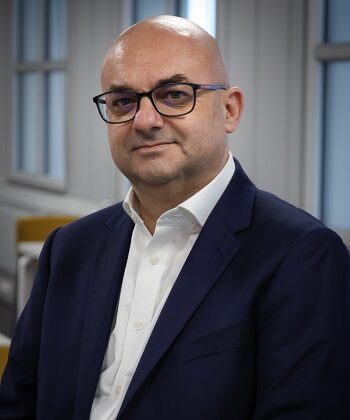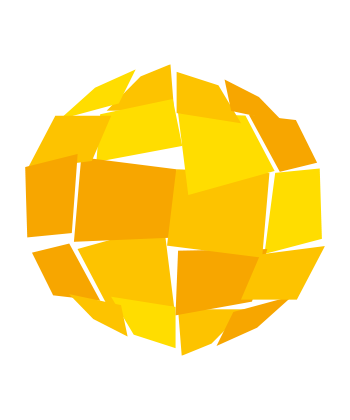“Engaging to transform”: managers and human resource directors, co-producers of a new people management role. Interview with Bernard Coulaty

Share
In the context of constant change in the workplace, where technological, societal, and intergenerational challenges are omnipresent, Bernard COULATY explores in his new book* several paradoxes and keys to rethinking a people management role that is better shared between managers and HR managers/directors. In this interview, he talks about his new book, the influence of his career, and the models and tools he proposes to help managers and HR.
Bernard COULATY, a former HR Director for international companies, is now a professor of practice at IÉSEG.
What prompted you to write this book, and what sets it apart from your previous books?
When I came back from Asia, 5 years ago (before joining IÉSEG), I wrote my first book called “Engagement 4.0”. This book focused on the fundamentals of engagement and defined employee profiles, from the most disengaged to the most over-committed. It was designed as an operational book for team managers.
In the meantime, COVID has come and gone. And we’ve lived through several years of transition, with many changes in the workplace: the development of remote work of course, but also the relationship between the different generations at work, the way we relate to work and its meaning.
So, I wanted to write a book that would be less of a working tool for managers, and more of a framework for strategic thinking, for both human resource directors (HRDs) and managers.
And while I do focus a lot on transformation, the core of the book is this duo, HRD and manager, and their ability to create individual and collective commitment. So, for the use of these 2 very important players, I wanted to model the human elements of companies. That was the origin of this book.
Can you tell us about some of the paradoxes that organizations and individuals are facing in the workplace?
Yes, there are many paradoxes, but I’ve picked out 4.
However, before we talk about paradoxes, it’s important to note that there are many current issues and challenges that form the backdrop: human, social, CSR and digital. We can see this clearly with artificial intelligence coming to the fore, or with the generational challenges facing companies. We often speak of a VUCA (volatility, uncertainty, complexity & ambiguity) world, and its more recent incarnation BANI (Brittle, Anxious, Non-linear, and Incomprehensible). So, these paradoxes are actually normal, they’re part of life.
The first paradox concerns individuals in the workplace. We live in a society that is becoming very individualized, so collective action is more difficult today. More and more, employees want ‘everything’: to be “themselves” at work, to be able to express themselves more authentically. And at the same time, they want to protect themselves from work, which can be seen as tiring or even harmful… So, they want to be able to breathe and disconnect. This first paradox is important.

The second paradox concerns managers. They are constantly looking to navigate a ridge with benevolence on one side and commitment/rigor on the other. Managers therefore must be protective, benevolent, and empathetic on the one hand. But at other times, they must be demanding, performance-oriented and committed. How do they position themselves between these two extremes?
A third paradox concerns organization, at the company level. Today, the issue of diversity has become vital. But at the same time, companies are seeking to align their employees around shared values and, ultimately, a common cultural model. It’s no easy task!
The final paradox concerns the role of HR, which is at the heart of my book. Over the past few years, we’ve been stressing the need for HR directors to be a genuine business partner, and we have seen a lot of progress in this area. But at the same time, they are expected to be the custodian of corporate values, culture and the leadership model of the organization, and not just a subservient servant of the business. HR directors need to be able to stand back and challenge the business and the organization.
There are undoubtedly other paradoxes, but these are the four I identified in the book, and which seem to be the most striking today because they have a lasting impact on the managerial and HR roles at the heart of the book.
In the book, you talk about your own professional career. How have these experiences influenced your vision of corporate engagement and management?
It has more than influenced my vision, little by little it has shaped my convictions on these topics. If I take a step back, there have been three main periods in my professional life.
The first period was when I was working at Danone’s production plants. There, I learned about engagement and commitment through social differences. We were faced with the problems of plant closures and restructuring, with employees who were very committed to saving their work tools and their future… This engagement has shaped many aspects of my approach to human issues in the workplace.
The second period was when I joined Pernod Ricard. From this period, I recall the challenges of cultural differences. I was first HR Director for France and then for the Group at the European level, then expatriated to Asia to coordinate HR policies from China to India, via Japan and Vietnam. These experiences made me realize that, beyond cultural differences, there are some universal drivers of engagement.
What changes are the behaviors that can be observed in different countries, but these are just behaviors that are expressed differently.
And finally, the third period relates to my entry into the world of academia, when I joined IÉSEG.
From this period, which is beginning, I would mention generational differences. I’m an advocate for fostering intergenerational collaboration. In fact, that’s what we do in my Executive program. We have put in place a system of reverse mentoring between young students and experienced professionals who work together.
Therefore, in my professional life, I’ve come to realize that all these social, cultural, and generational differences exist, but they are not critical. What really counts is finding the common denominator which enables us to develop collective action and meaning.
You propose a model for a people management role that is better shared role between managers and HR directors: could you explain this model and how it can help transform organizations?
Today, we need to ask ourselves who has the greatest influence and impact in a company: is it the managerial line (from CEO through to team leader, etc.) or is it HR’s role?
In my experience, this can vary depending on the company or sector. Sometimes it’s the HR department that takes the lead and will guide managers on what to do (in terms of people management). In other cases, it’s the managers who have more influence and are at the center of the game and embody the policy. In this case, HR is more of a peripheral support function.
In my book, I set out to model the division of people management but starting from the fact that different realities existed in companies. I wanted to show how things could be rebalanced a little, to have a role that is better shared and more balanced between managers and HR in order to support companies and also employees ( that form the different teams).
Based on these reflections I identified several shared missions between HR and managers. For example, there are ‘transaction’-type missions (linked to quality of life at work, social relations, talent acquisition /management, or tools and processes…) These actions need to be carried out to achieve a first level of satisfaction but will not create true sustainable engagement.
And then there are what are referred to as transformation actions, which are more concerned with the development, commitment and transformation of individuals, teams, managers and the organization which can create long term engagement. So, I’ve tried to clarify all these missions.
Then I propose a second model concerning postures or the behaviors we have as HR director or manager. As I mentioned earlier, managers need to be both empathetic and demanding, while HR people need to be both listeners and engaged ‘doers’. Listening is HR managers’ number-one tool. But once you’ve listened, you also have to act, to be able to take people along with you, and thus demonstrate leadership.
By cross-referencing missions and postures, I propose a single set of skills common to both managers and HR directors, so that they can work better together to support the people in their organizations.
You include self-diagnostic exercises. How can these exercises help readers apply the concepts in their own professional context?
It’s a book that’s both an essay/analysis, because there are times when I say what I think with strong convictions that come from my experience in the field, but there’s also a reference manual side to it., as I detail a certain number of things in a pedagogical way. At other times, it’s also designed to be a toolbox, with some sixty self-diagnostic exercises spread across different chapters in the book.
Some of these are designed for everyone, as they focus on personal development or the organization, while others are aimed more at managers analyzing how they work with their team, or HR managers analyzing their HR policy and posture.
So, there are several drawers to explore: individual, collective, team and organizational diagnoses. These exercises reflect all the transformations I describe in the book, and there really is something for everyone.
What are the main distinguishing features of your book?
I believe that 30 years of professional experience form the basis of my book and what I propose as a new model of HR thinking. This was the case with my first book, but it’s even more the case with my latest one. It’s true that there are models, tools, and templates, but it’s not a technical book, because I also share personal experiences and anecdotes from the field. Personally, I find this interesting, a mix of tools, models, and experience.
The book is a bit like a Swiss Army knife, in that it can be used in many ways. You can go straight to one subject, make a self-diagnosis, then go back to a model, then come back to anecdotes.
The book is aimed at HRDs and managers, of course, but also at change management professionals, consultants and even business leaders who want to see the people management role in a different light. Finally, It is addressed of course at students, future professionals and will naturally become their reference manual.
*”Engager pour transformer : managers et DRH, coproducteurs d’une nouvelle fonction humaine” is available in French (Editions EMS).




